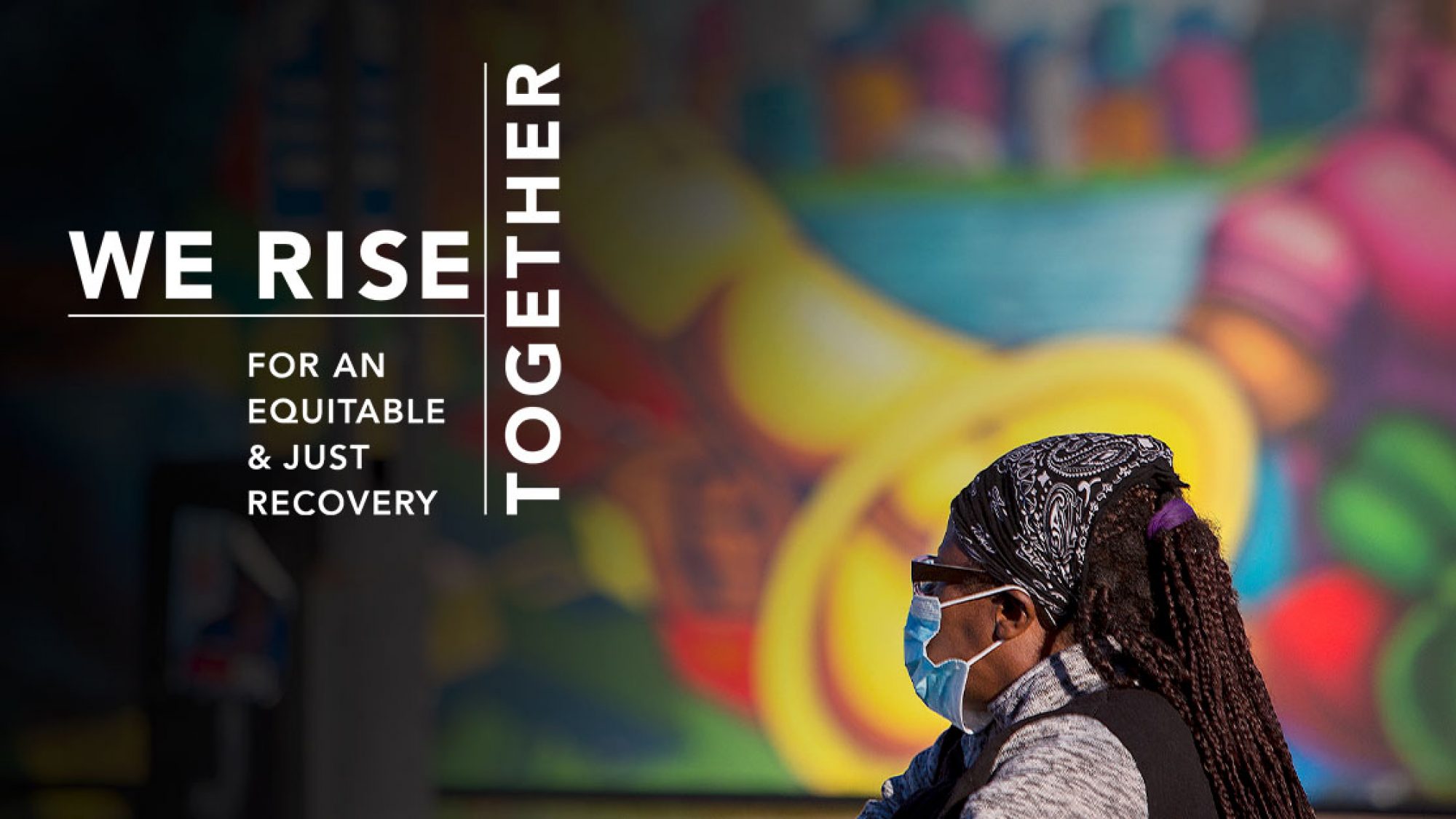On October 8—the anniversary of the Great Chicago Fire, The Chicago Community Trust—Chicago Mayor Lori Lightfoot, and Chicago businesses and philanthropies launched WE RISE TOGETHER. This unprecedented coalition initiative will address the systemic economic inequities that COVID-19 brought to the surface, and seize the opportunity to build a more equitable recovery.
Together, we can transform the systems that have held back communities of color.
Lipman Hearne was the Trust’s communications partner for this initiative, creating the name, logo, foundational messaging and social media toolkit. With the big announcement behind us, Lipman Hearne editorial creative director Libby Morse caught up with Clothilde Ewing, the Trust’s vice president for strategic communications, about our work together.
LIPMAN HEARNE: That was pretty much the definition of fast-paced excitement.
EWING: Once it was decided that an announcement on October 8 would help connect We Rise Together to another time when Chicago showed the world what rebuilding really meant, we were full speed ahead for about four weeks.
LIPMAN HEARNE: Let’s start by talking about how you communicate a huge challenge and an equally ambitious solution.
EWING: This year has shined a light on the issue of inequity in our city and country. As more and more people become aware of the issue, and more and more people want to play a part in helping to resolve it, we understand that there was no greater moment than now for collaboration. Together, we have the possibility of transforming the systems that have held back communities of color for centuries.
But we still had to break it down for audiences, both in terms of explaining why it matters beyond good intentions, and how individuals can make a difference. We want the folks throughout the region to keep both the problem and solution front and center in the public conversation. We want donors to make the kind of significant gifts needed to dismantle longstanding obstacles to opportunity in marginalized communities. And we need rally businesspeople and policymakers to create business practices and policies that align with the goals of inclusive growth.
LIPMAN HEARNE: Coming up with a name that hit the right notes was key.
EWING: Together We Rise helped us create a “big tent” for all our audiences and really spoke to our core idea: this recovery has to be a recovery that is experienced by all. Because if it isn’t, then it’s not actually a recovery—and our region will be not be what it can be.
LIPMAN HEARNE: While COVID-19 was economically devastating to Black and Latinx communities, the messaging for We Rise Together also had to make sure audiences understood this wasn’t a one-time catastrophe—or a one-time intervention.
EWING: It’s important for people to understand that Black and Latinx communities never fully recovered from the 2008 recession—that, in fact, these communities were already starting from behind in 2008 because of longstanding, intentional roadblocks to opportunities. A lot of people thought that while 2008 was tough, we were all back on track before COVID-19 hit. So, our messaging needed to open up the frame for our audiences—not by finger-pointing or castigating them, but by showing how this was a systemic issue that had been building for generations.
LIPMAN HEARNE: As the number of partners for We Rise Together continues to grow, this has become a genuinely distributed leadership initiative. How do you wrangle that from a communications perspective?
EWING: We definitely want a lot of people talking about this on a wide basis, and talking about how this is a comprehensive approach that involves grantmaking as well as business practice and policy reform. A strong foundational story and a simple, direct, resonant theme line are so important. The donor pitch deck we developed together lays out the argument concisely and vividly. And we’re developing a message map that all the partners can share.
LIPMAN HEARNE: Two things you emphasized to us were critical in shaping our work. First, it was important to insist that that these communities weren’t “broken.” And second, that the messaging had to go beyond talking about a moral imperative—even though the case for that imperative was very strong.
EWING: Right. Even though the disparities among our communities are staggering, people in Englewood are as proud of their communities as people are in Streeterville. And people in both communities share equally strong identities as Chicagoans.
And if we focused only on social justice, we were missing a big part of the story. We Rise Together isn’t just about doing the right thing, it’s also about doing the smart thing. Even before COVID-19, Chicago regional’s growth ranked 67th among the 100 largest U.S. metropolitan economies. When two-thirds of our region can’t live up to their potential, that affects the entire region. Our economy needs everyone to participate in it.
